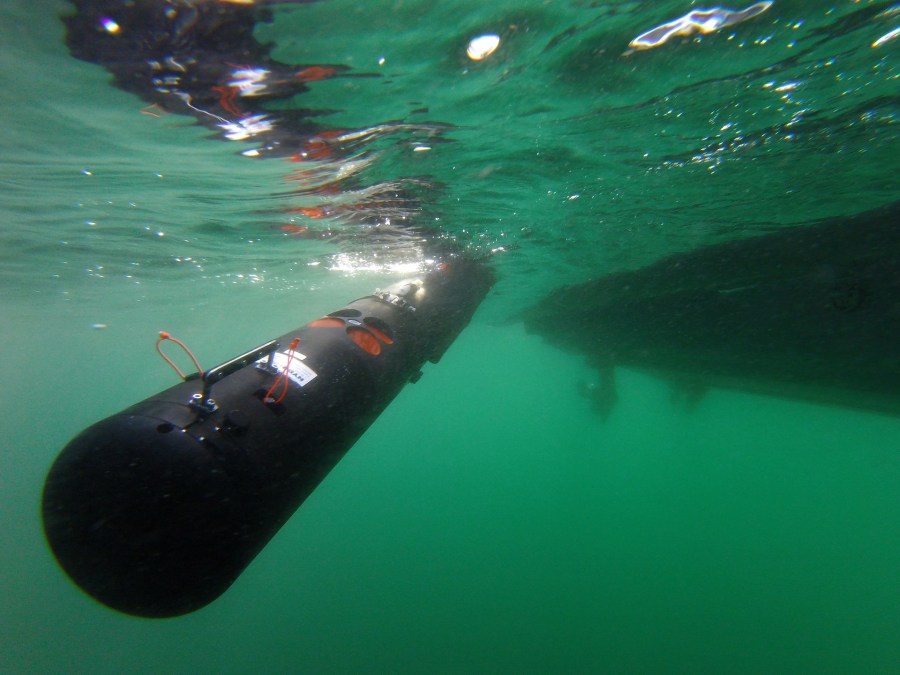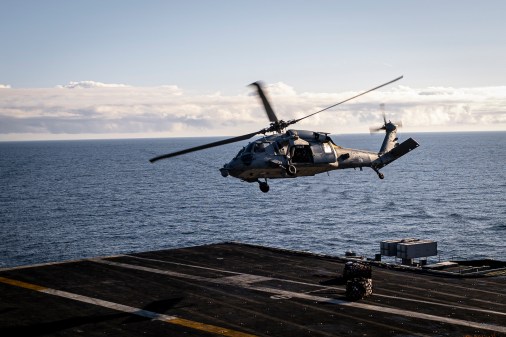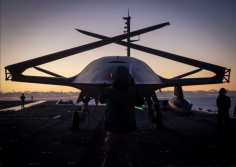Navy eyeing new tech to help kill underwater drones and enemy divers

Undersea warfare could play a major role in future conflicts, and the U.S. Navy is looking for new capabilities that could help it detect and defeat enemy unmanned underwater vehicles (UUVs) and human divers.
Maritime drones are capable of performing a variety of military missions such as intelligence, surveillance and reconnaissance, mine laying and more. The Pentagon is pursuing a variety of these types of systems, and it also has a force of Navy SEALs that are trained to operate below the waves.
But the Pentagon also needs the ability to thwart adversaries’ capabilities in this realm.
“The Government is seeking technologies related to seabed and port security for defense against divers and UUVs. These technologies should support detection, tracking, and the subsequent fire control necessary for engagement of potential undersea manned and unmanned threats,” according to a source sought notice released Friday by the Navy on Sam.gov.
Mission packages that the sea service is eyeing include shore- or ship-based subsystems, equipment and software for mission planning, tactical decision aid, field management (health and status) and battle damage assessment — as well as systems for detection, tracking, navigation and communications.
Product requirements noted in the request for information include the ability to plan and deliver a field of distributed, autonomously networked wireless sensor nodes via UUV; detect and classify a target of interest and provide its bearing, range and speed by utilizing said network, with the option to command and control the network and operations remotely via an operator interface; and assemble information provided by the network autonomously to form an estimation of target track and position.
The aim is to have a combination of capabilities, or “system of systems,” that can “hold a threat target at risk of prosecution” by U.S. weapons.
In an attachment to the RFI, the Navy listed 39 areas of general interest related to these types of technologies including a slew of sensors; multi-source sensor data fusion and exploitation; techniques for quantum encryption, coding and computation; multi-domain UUV autonomous operation and interaction; insertion of artificial intelligence “techniques” into undersea sensors for “situations optimization”; contested undersea battlespace payload delivery; “netted” UUV-deployed anti-submarine warfare weapons and delivery; and others.
Responses to the RFI are due Sept. 5.
Meanwhile, lawmakers are also sounding the alarm about the threats posed by undersea drones and trying to push a bill that would require the Pentagon to do more analysis and formulate a strategy to beef up U.S. defenses.
“Incursions of unmanned aerial vehicles into United States airspace is an issue of concern. The committee believes that potential incursions of unmanned underwater vehicles (UUVs) could pose similar problems for our security. Therefore, the committee directs the Secretary of Defense, in consultation with the Secretary of Homeland Security, to analyze incidents of suspected or confirmed intrusions by UUVs on or near U.S. military installations. Based on that analysis, the Secretary shall identify a strategy for addressing such incursions, and whether the Department needs to acquire different or enhanced capabilities to neutralize future threats from UUVs,” per the Senate Armed Services Committee’s report on the fiscal 2024 National Defense Authorization Act, which was passed by the Senate last month.
The bill would task the secretary of defense to deliver a report on that strategy to the congressional defense and intelligence committees by April 1, 2024.
Congress has yet to pass a final version of the 2024 NDAA.
During a teleconference in June, DefenseScoop asked Senate Armed Services Committee member Sen. Tim Kaine, D-Va., why the provision was included in the legislation and whether it was in response to specific adversary activities that the committee had learned of.
“I would say that it’s more based upon an awareness of the technology and how it can be used than a response to a particular incident. But we know the technology. I mean, we have such technologies, we know how they can be used. And … it would be kind of malpractice not to make sure that our own assets are protected,” Kaine said.






